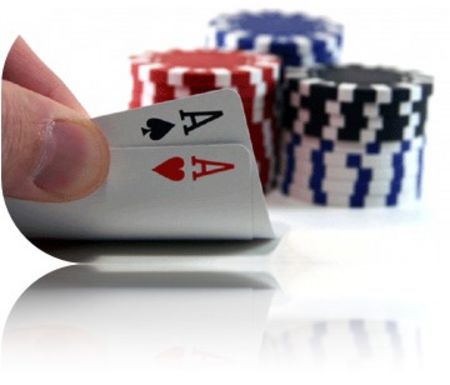Calling Bets

The preferred strategy in poker is generally to raise or to fold, but there are times
when calling is correct, especially with your strong draws and little chance of
winning the pot on a semi-bluff raise.
Calling bets on the turn is much different than calling bets on the flop. Because flop
bets are small, you are generally getting decent odds to see one more card to try
and improve your hand. However, you rarely are getting good odds to draw on the
turn, except for the premium draws to flushes and open-ended straights. Exceptions
to this are when the pot is very large.
Let's look at strategy when an opponent bets and you are unsure whether or not
you hold the best hand. There are four considerations in your decision to call or
fold, assuming you have determined that raising is not a good option:
-
The probability that you currently have the best hand
- The probability that your hand will improve to the best hand
- The probability that your opponent will improve to the best hand if you
currently have the best hand
- The pot odds
The three top bullet points combined is the probability that you will win the hand.
This probability does not always need to be very high if you are getting good pot
odds. For example, if you feel you have a 25% chance of winning the hand, you
need at least 3 to 1 implied pot odds on your calls. In summary, to call a turn bet,
you need to compare the overall probability that you will have the best hand on the
river versus the implied pot odds on your call.
NEXT...Calling Raises

